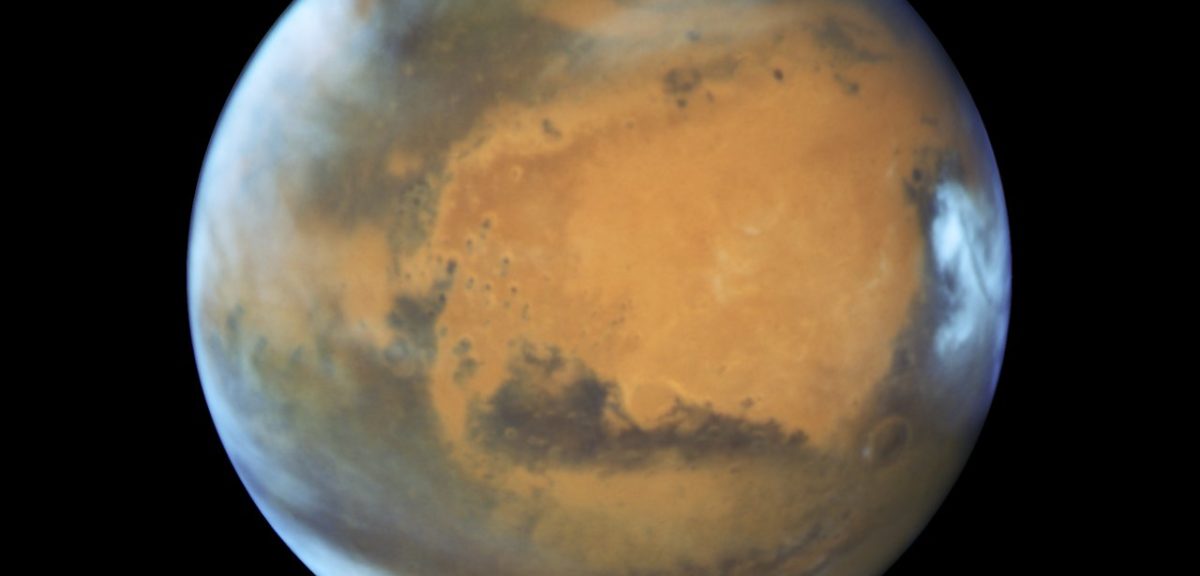Two new studies about Mars made news this week.
Liquid Water Lake Detected on Mars
First, a group of Italian scientists announced that they detected a 20-kilometer-wide lake of liquid water located about 1.5 kilometers beneath the ice of the southern polar ice cap of Mars.
The scientists analyzed more than three years of data they gathered with the Mars Advanced Radar for Subsurface and Ionosphere Sounding instrument (MARSIS) on the European Space Agency’s Mars Express spacecraft.

An isolated hill in the Medusae Fossae Formation. The effect of wind erosion on this hill is evident by its streamlined shape. (High-Resolution Stereo Camera/European Space Agency)
After studying the radar profile of a region of Mars, called Planum Australe, the researchers found it to be comparable to the liquid water lakes that have been found beneath the ice sheets of the Antarctic and Greenland.
This suggested to them that there must be a subglacial lake at the location they scanned on Mars.
While it’s thought the temperature of the Mars subglacial lake is probably below the freezing point of pure water, the researchers think that a number of factors allow it to remain liquid.
A study outlining the researcher’s findings was published in the journal Science.
Much of Mars’ Dust Comes From One Location
Another new study, published in the journal Nature Communications, suggests that a good amount of Martian dust comes from a mysterious geological formation called Medusae Fossae, which is located near the Red Planet’s equator.

Mars Express detects water buried under the south pole of Mars (NASA/Viking; THEMIS background: NASA/JPL-Caltech/Arizona State University; MARSIS data: ESA/NASA/JPL/ASI/Univ. Rome; R. Orosei et al 2018)
Study authors made the link after they found dust in Mars atmosphere and from the surface were a chemical match.
Study co-author Kevin Lewis, from Johns Hopkins University, in Maryland, says that the Red Planet wouldn’t be as dusty as it is if it wasn’t for the gradual erosion of the formation.
The Johns Hopkins team also recently found that the formation itself is the result of violent volcanic eruptions that blasted fountains of hot ash, rock, and gas into the sky some 3 billion years ago.






















Comments are closed.